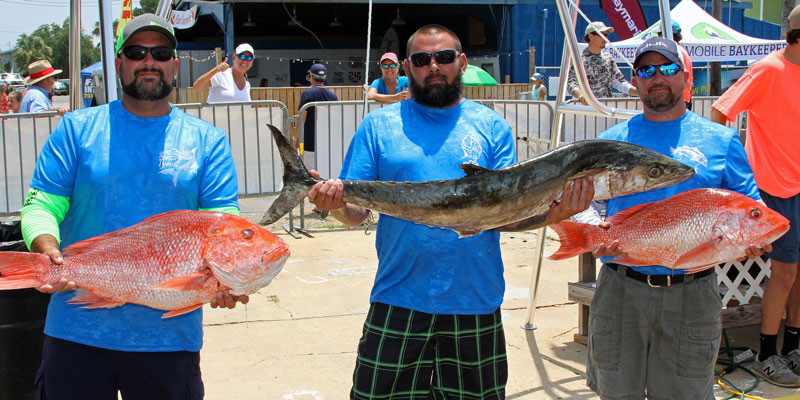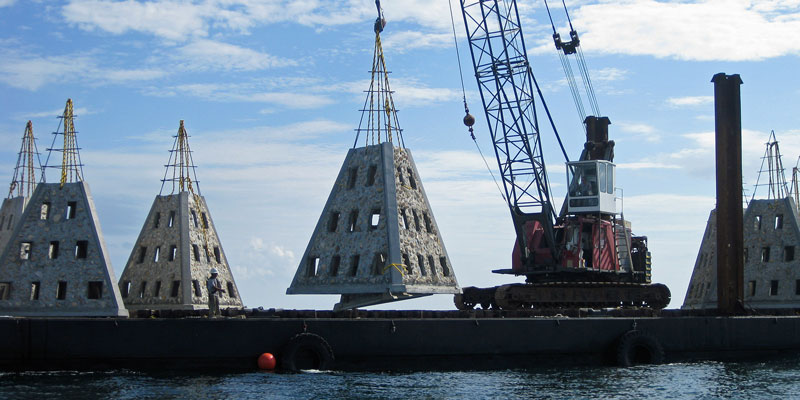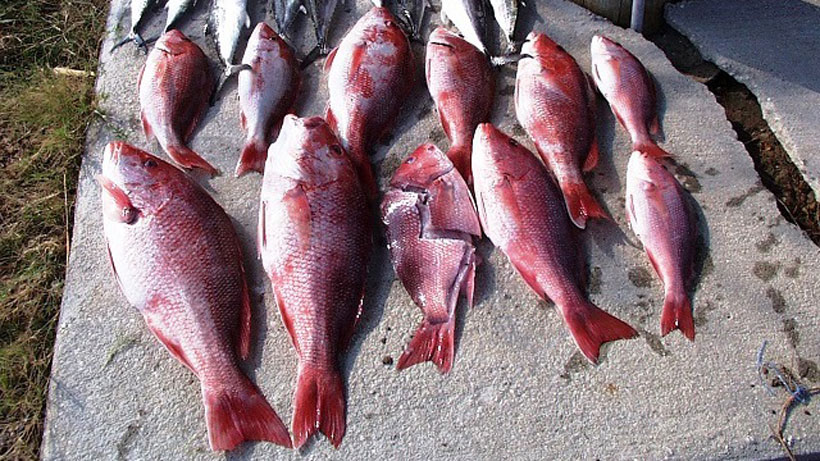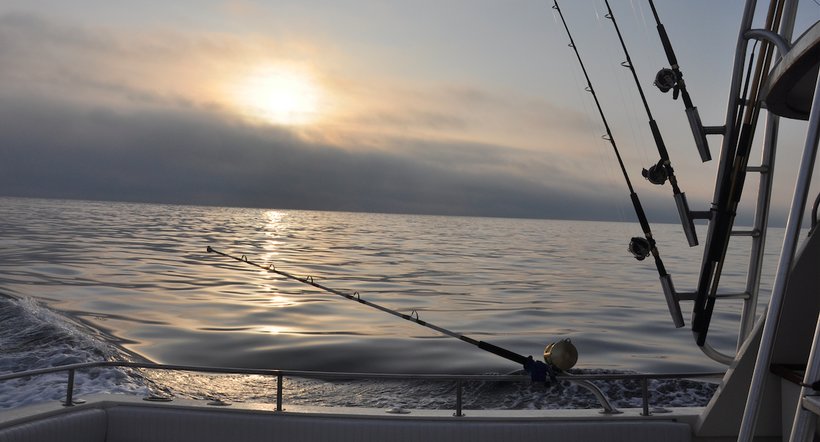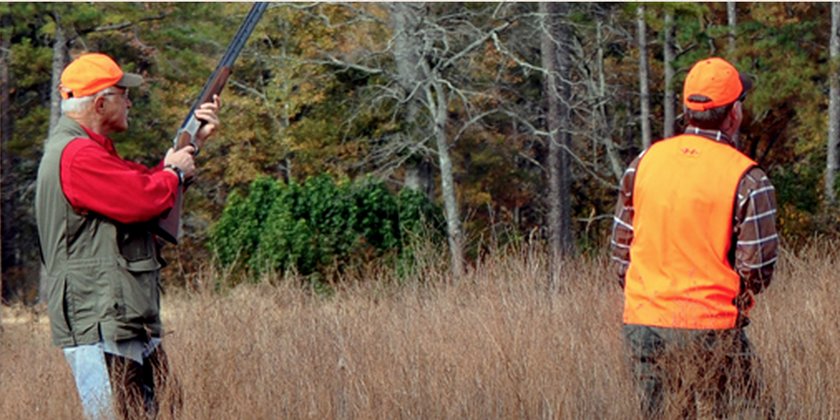Honestly, I’m not surprised that Alabama saltwater anglers caught so many red snapper in six-plus weeks that the private recreational season had to close earlier than planned.
Thankfully, the Alabama Deep Sea Fishing Rodeo (ADSFR), with its Red Snapper Jackpot, managed to squeeze in its final day of competition before the season ended Sunday, July 22. The season for the charter-for-hire boats fishing the rodeo ended at midnight on July 21.
The unbridled enthusiasm anglers exhibited for snapper fishing this year surpassed anything I’ve witnessed in my 26 years of covering the outdoors in Alabama.
Alabama Marine Resources Director Scott Bannon said the angler effort surprised everyone.
“On the weekend of June 9, there were more people snapper fishing than I have seen in my 21 years with Marine Resources, including on rodeo weekend,” he said. “The effort was tremendous. Our Chief of Enforcement, Jason Downey, was on patrol, and he said there were 200 boats surrounding him on the Bridge Rubble.
“The number of people who went fishing this year has been phenomenal. And it’s good that people had the opportunity to fish.”
The motivation to catch snapper likely came from the dire situation that snapper anglers faced in the spring. Without some kind of relief from NOAA Fisheries, the possibility of even a short snapper season looked grim.
Instead, the five Gulf states came together to request an exempted fishing permit (EFP) that would allow each state to set its season under an approved system that allowed each state to catch a certain quota of snapper.
The Alabama Marine Resources Division’s mandatory Red Snapper Reporting System, better known as Snapper Check, allows Marine Resources officials to monitor the harvest on a near real-time basis, one of the reasons NOAA Fisheries approved the EFP for the 2018 and 2019 seasons.
Marine Resources based its proposed 47-day season on the data gathered from last year’s snapper season. That data included daily catch rate, size of the fish and the amount of angler effort (man-days fishing for snapper).
When the 2018 season was set, Bannon repeatedly used the word “potential” when discussing the length of the season. It could be longer or shorter, depending on the daily catch rate and weather.
The weather turned out to be a factor, but not because it was bad. It was so good that anglers only had a couple of days with rough seas during the 28 days of the private recreational season.
“Without the EFP, there may not have been a federal fishing season,” Bannon said. “The individual state seasons could have consumed all of the total allowable catch.”
Based on the 2017 daily harvest rate of red snapper, Bannon said Marine Resources considered a 50-day season, but reduced it to 47 days because they anticipated a “little bit” of increased effort to catch Alabama’s quota of 984,291 pounds of red snapper.
Bannon said when the snapper harvest numbers for June were published, he knew the season would have to be closed before Labor Day.
With the unparalleled artificial reef habitat off the Alabama coast and good weather, anglers of all skill levels were able to enjoy great snapper fishing. Huge red snapper were posted on social media every day during the season.
Last year, the data indicated an average of 1,770 anglers fished for snapper per day. In 2018, preliminary data showed that the average anglers per day was much higher than in 2017. The increased number of anglers, along with an increase in size of the fish being landed, resulted in higher daily landings for the 2018 season.
“We don’t like working with pounds,” Bannon said. “We’ve seen with the evolution of the snapper seasons that with larger fish you obviously reach the total allowable catch quicker. The product of our management efforts in the Alabama reef zone is the increased abundance and size of fish being caught.”
Bannon said the downside of the 2018 season is anglers have not fully embraced the benefits of reporting their catches through Snapper Check. He said the 2018 reporting rate is between 35 and 36 percent, up from last year’s 30 percent, but still disappointingly low.
“I still feel that people don’t fully understand how much better data we could get if we have a higher compliance rate with Snapper Check,” he said. “Real numbers make a difference in the landings estimate. With the state programs, we can maintain greater awareness on the fishing effort and landings allowing us to maximize the days of fishing.”
“The purpose of the EFP is to show that states can manage their fishery to a quota, and that we would manage it effectively to prevent overfishing and set seasons that work for our anglers and are guaranteed a certain amount of fish. If you just open a federal season, it’s a free-for-all across the Gulf. If the weather was bad in our part of the Gulf we lose those days while others are fishing.”
The weather was so good that one charter-for-hire captain told Bannon that he had never been able to fish the entire month of June before this year.
“The positives we see are, one, we had an allocation higher than what we caught last year. And, two, we saw an increase in the number of people who were able to fish,” Bannon said. “We opened for a season we thought would benefit the largest number of people, and the data shows a lot of people went fishing.”
Dr. Sean Powers, head of Marine Sciences at the University of South Alabama and one of the ADSFR judges last weekend, said the good news is the red snapper fishery in the Gulf of Mexico continues to get better.
“About five years ago, the Gulf Council removed the overfishing (catch rate too high) status from red snapper,” Powers said. “Just recently, the Council removed the overfished status. Based on the numbers in the stock we are not in an overfished status, meaning the biomass is no longer below the threshold we think jeopardizes the stock. Although we want to rebuild the stocks a little further, it is no longer overfished.
“That means the seasons and bag limits will stay relatively constant for a while. The (computer) models show an increase in the number of fish over the next couple of years. The stock is very healthy right now, especially off Alabama. Every year we seem to get good recruitment (juvenile fish entering the fishery), and those recruits have that artificial reef habitat. Plus, there is a lot of natural habitat in the deeper water that acts as a reserve, because people don’t have to go that far to catch their limit of snapper.”
Bannon said if the red snapper fishery continues to be managed by the states it will reduce the chances that overfishing will become a problem again.
“The takeaway is we had 28 days of incredible red snapper fishing that a tremendous number of people took advantage of,” Bannon said. “And we have shown that the states can responsibly manage the red snapper fishery. The sustainable management of this red snapper season will go a long way to ensuring continued and expanded state control of this fishery.
“But folks need to know there are a lot of other fish in the Gulf to catch now that red snapper season is closed. You can catch beeliners (vermilion snapper), king mackerel and Spanish mackerel, and the triggerfish and amberjack seasons open back up the first of August.”
David Rainer is an award-winning writer who has covered Alabama’s great outdoors for 25 years. The former outdoors editor at the Mobile Press-Register, he writes for Outdoor Alabama, the website of the Alabama Department of Conservation and Natural Resources.




